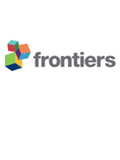
Frontiers in Aging Neuroscience
Scope & Guideline
Bridging Science and Aging for Cognitive Excellence.
Introduction
Aims and Scopes
- Cognitive Aging and Neurodegeneration:
Research exploring the mechanisms behind cognitive aging, Alzheimer's disease, Parkinson's disease, and other neurodegenerative disorders, aiming to identify biomarkers and therapeutic targets. - Neuroinflammation and Immunity:
Studies investigating the role of neuroinflammation, immune responses, and their implications in aging and neurodegenerative diseases. - Translational and Clinical Research:
Focus on translating basic research findings into clinical applications, including novel therapeutic strategies, clinical trials, and population-based studies. - Biomarkers and Diagnostics:
Identification and validation of biomarkers for early diagnosis and monitoring of neurodegenerative diseases, utilizing advanced neuroimaging and biofluid analyses. - Lifestyle and Behavioral Interventions:
Examining the effects of physical activity, diet, and non-pharmacological interventions on cognitive function, brain health, and quality of life in older adults. - Technological Innovations:
Application of machine learning, artificial intelligence, and digital health technologies in the assessment, diagnosis, and treatment of cognitive impairments.
Trending and Emerging
- Gut-Brain Axis Research:
An increasing number of studies are focusing on the interactions between gut microbiota and brain health, emphasizing the impact of diet and gut health on neurodegenerative diseases. - Neuroimaging Techniques:
There is a growing trend in utilizing advanced neuroimaging techniques, such as functional MRI and PET scans, to study brain connectivity, structure, and function in aging populations. - Digital Health and Telemedicine:
Emerging research is exploring the use of digital health technologies, telemedicine, and remote monitoring to assess cognitive function and deliver interventions for older adults. - Machine Learning and AI Applications:
The application of machine learning and artificial intelligence in predicting cognitive decline, classifying neurodegenerative diseases, and analyzing complex datasets is rapidly increasing. - Interdisciplinary Approaches:
There is a marked trend towards interdisciplinary research that integrates insights from neuroscience, psychology, gerontology, and public health to address the complexities of aging. - Resilience and Protective Factors:
Research is increasingly focusing on identifying resilience factors and protective behaviors that may mitigate cognitive decline and promote healthy aging.
Declining or Waning
- Traditional Pharmacological Approaches:
There is a noticeable decrease in studies focused solely on traditional pharmacological treatments for neurodegenerative diseases, possibly due to a shift towards exploring combination therapies and lifestyle interventions. - Single Modality Studies:
Research that exclusively utilizes a single modality (e.g., only MRI or only blood biomarkers) has seen a decline, suggesting a move towards integrative and multimodal approaches that combine various types of data. - Basic Mechanistic Studies Without Clinical Relevance:
Basic research that does not connect findings to clinical applications or implications is becoming less prevalent, as researchers increasingly aim to bridge the gap between laboratory studies and real-world applications. - Animal Models Lacking Human Relevance:
The prevalence of animal studies that do not adequately model human conditions or translate findings into human applications is waning, as emphasis shifts towards more clinically relevant models.
Similar Journals
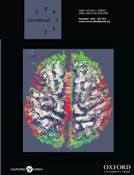
CEREBRAL CORTEX
Shaping the future of neuroscience discovery.CEREBRAL CORTEX, published by Oxford University Press Inc, is a premier journal dedicated to advancing the field of neuroscience, specifically focusing on the cellular, molecular, and cognitive aspects of cortical structure and function. With an impressive impact factor that situates it in the top quartile (Q1) of its categories for 2023, this journal holds significant relevance for researchers and professionals interested in the latest discoveries and methodologies in both Cognitive Neuroscience (ranked #31 out of 115) and Cellular and Molecular Neuroscience (ranked #48 out of 97). Operating without an open access model, it ensures rigorous peer review and dissemination of high-quality research from across the globe. Since its inception in 1991, CEREBRAL CORTEX has established itself as a critical platform for educators and inventors, pushing the boundaries of knowledge in understanding brain function and its implications for behavior. Researchers and students alike will find this journal an invaluable resource for both foundational and cutting-edge studies in neuroscience.
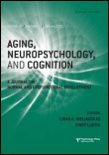
AGING NEUROPSYCHOLOGY AND COGNITION
Exploring the intersection of mind and age.AGING NEUROPSYCHOLOGY AND COGNITION, published by ROUTLEDGE JOURNALS, TAYLOR & FRANCIS LTD, is a leading scholarly journal that spans the interdisciplinary fields of psychology, neuropsychology, and gerontology. With a strong focus on understanding aging processes and cognitive function, this journal serves as a critical platform for researchers, clinicians, and students dedicated to advancing knowledge in the realm of cognitive aging. The journal, established in 1994, presents high-quality research articles, comprehensive reviews, and innovative studies that contribute to the discourse surrounding mental health and aging. Notably, it has been recognized with a 2023 Q2 ranking in Experimental and Cognitive Psychology and Neuropsychology categories, reflecting its significant impact within these domains. The journal includes open access options, making it widely accessible to a global audience. Researchers interested in the latest findings and theoretical developments in aging neuropsychology will find this journal an invaluable resource, further enhanced by its robust Scopus rankings and commitment to academic excellence through 2024 and beyond.

Aging Brain
Illuminating the Path to Cognitive LongevityAging Brain is a premier Open Access journal published by Elsevier, dedicated to advancing the understanding of the neurobiological changes associated with aging. Since its commencement in 2021, this journal has been pivotal in disseminating high-quality research that explores the intricate relationships between aging and cognitive functions, neurological disorders, and overall brain health. With a notable commitment to open accessibility, Aging Brain ensures that vital findings are available to a global audience, fostering collaboration and innovation in the field. Researchers, healthcare professionals, and students alike will find a rich repository of cutting-edge studies, reviews, and insights aimed at addressing the complexities of the aging brain. The journal stands as an influential platform for those passionate about enhancing the quality of life for the aging population, making it a valuable resource in gerontology and neuroscience.
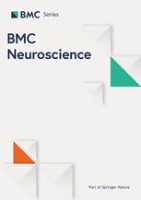
BMC NEUROSCIENCE
Exploring the Frontiers of Neuroscience ResearchBMC NEUROSCIENCE is a prominent open access journal dedicated to the dissemination of high-quality research within the dynamic and rapidly evolving field of neuroscience. Published by BMC, a well-respected leader in open access publishing, this journal facilitates the free exchange of knowledge since its inception in 2000. With the ISSN 1471-2202, BMC NEUROSCIENCE aims to address the diverse interests of the neuroscience community by covering a broad spectrum of topics, ranging from cellular and molecular neuroscience to general neurological studies, thus appealing to researchers, professionals, and students alike. Although it currently holds a Q4 ranking in Cellular and Molecular Neuroscience and a Q3 rank in miscellaneous Neuroscience categories, its commitment to advancing the understanding of brain function and disorders remains steadfast. The journal features a user-friendly Open Access model, ensuring that critical research findings are readily accessible to everyone, fostering collaboration and innovation in the field. As the journal continues to evolve towards its convergence years of 2024, it aspires to enhance its impact and global reach, making it a valuable resource for anyone interested in advancing neuroscience research.

GeroScience
Pioneering Discoveries in Geriatric HealthGeroScience, published by Springer, is an esteemed open-access journal that focuses on the multidisciplinary field of aging research. Since its inception in 2017, the journal has quickly established itself as a leader in its field, achieving impressive Q1 quartile rankings across various categories, including Aging, Cardiology and Cardiovascular Medicine, Geriatrics and Gerontology, and Complementary and Alternative Medicine, as per 2023 evaluations. With a significant impact factor that underscores its influence and reach in academia, GeroScience aims to disseminate high-quality research that addresses the complex challenges and advancements related to aging. Its accessible publication format fosters greater dissemination of knowledge and encourages collaboration among researchers, practitioners, and students eager to contribute to the growing body of work on age-related health issues. As it continues to thrive, GeroScience remains a pivotal resource for anyone looking to stay at the forefront of aging research.

Brain Communications
Empowering Research for a Healthier MindBrain Communications is an esteemed, open-access academic journal published by Oxford University Press since 2019, focusing on the dynamic field of neuroscience. With a dedicated ISSN and an E-ISSN of 2632-1297, this journal aims to address the intricate relationships between brain functions, psychiatric disorders, and neurobiological mechanisms. The journal stands out in the academic realm, holding a prestigious Q1 ranking across several categories, including Biological Psychiatry, Cellular and Molecular Neuroscience, Neurology, and Psychiatry and Mental Health for 2023. Notably, it has also secured impressive Scopus ranks in various neuroscience and psychiatry fields, evidencing its commitment to high-quality research. With an impact factor reflective of its growing influence, Brain Communications provides accessible research findings to professionals, researchers, and students alike, fostering a deeper understanding of complex neurological phenomena. This innovative journal is pivotal for anyone involved in advancing knowledge in neuroscience and mental health.
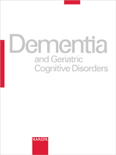
DEMENTIA AND GERIATRIC COGNITIVE DISORDERS
Innovating solutions for cognitive decline in the elderly.DEMENTIA AND GERIATRIC COGNITIVE DISORDERS is a distinguished peer-reviewed journal published by KARGER, based in Switzerland. With a focus on the critical fields of cognitive neuroscience, geriatrics, and psychiatry, this journal is integral to advancing our understanding of cognitive decline and geriatric health. Despite being established from 1990 through 1992 and relaunching its scope in 1994, it has consistently provided a platform for innovative research, as reflected in its strong impact factor and notable Scopus rankings, placing it in the Q2 quartile for disciplines including cognitive neuroscience and geriatric medicine. The journal aims to foster interdisciplinary dialogue and collaboration among researchers, healthcare professionals, and educators, contributing to the growing field of dementia research and elderly care. Open access options further ensure that this vital knowledge is widely accessible, making a significant impact in both academic and clinical settings. With a commitment to quality and relevance, DEMENTIA AND GERIATRIC COGNITIVE DISORDERS remains a key resource for those dedicated to understanding and addressing the challenges posed by cognitive disorders in aging populations.

Frontiers in Aging
Innovating the Future of Aging ScienceFrontiers in Aging is a leading academic journal published by FRONTIERS MEDIA SA, dedicated to advancing the understanding of the biological processes associated with aging. Established in 2020, this open-access journal aims to bridge the gap between various disciplines including genetics, molecular biology, and physiology, providing a multidisciplinary platform for researchers and clinicians alike. With a notable impact factor denoted by its Q2 quartile rankings in Aging, Genetics, and Molecular Biology, and a Q1 ranking in Physiology as of 2023, the journal is recognized for its contribution to the scientific community. Located in Lausanne, Switzerland, it is committed to promoting open discourse and publishing cutting-edge studies that address the complexities of aging and its implications for health and longevity. The journal’s editorial board, consisting of leading experts, ensures the rigorous peer-review process, maintaining high academic standards and fostering innovation in aging research.

AGING CLINICAL AND EXPERIMENTAL RESEARCH
Connecting research and practice in aging.Aging Clinical and Experimental Research, published by Springer, is a premier journal dedicated to advancing the field of geriatric medicine and understanding the complexities of aging. With a commitment to publishing high-quality original research, review articles, and clinical studies, this journal plays a crucial role in disseminating knowledge to researchers, healthcare professionals, and students interested in the biological, clinical, and social aspects of aging. Boasting a 2023 impact factor that places it in the Q2 quartile for both Aging and Geriatrics and Gerontology categories, it ranks favorably within the Scopus metrics—20th out of 116 in Geriatrics and Gerontology and 15th out of 38 in Aging. The journal provides vital insights for the ongoing discourse in aging research, making it an essential resource for those seeking to enhance their understanding of aging-related phenomena and improve healthcare outcomes across populations. The converged years of publication from 1989 to 2024 demonstrate its longstanding commitment to the field, highlighted by its notable presence in Germany and access to a broad international readership.
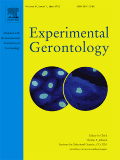
EXPERIMENTAL GERONTOLOGY
Pioneering Research in the Biology of AgingEXPERIMENTAL GERONTOLOGY is a prestigious journal published by PERGAMON-ELSEVIER SCIENCE LTD, dedicated to the evolving field of aging research. With a rich history dating back to 1964 and continuing through 2024, this journal aims to advance the understanding of the biological processes underlying aging and develop interdisciplinary approaches to improve healthspan. ENCOMPASSING a broad scope, including *biochemistry*, *cell biology*, *endocrinology*, *genetics*, and *molecular biology*, it holds impressive rankings in the 2023 Scopus Ranks, featuring in Q1 and Q2 quartiles across multiple categories. This positions it as a vital resource for researchers and professionals focused on gerontology and related fields. As a subscription-based journal without open access, EXPERIMENTAL GERONTOLOGY ensures the dissemination of high-quality research through rigorous peer review, making it an essential publication for those aspiring to remain at the forefront of aging studies.